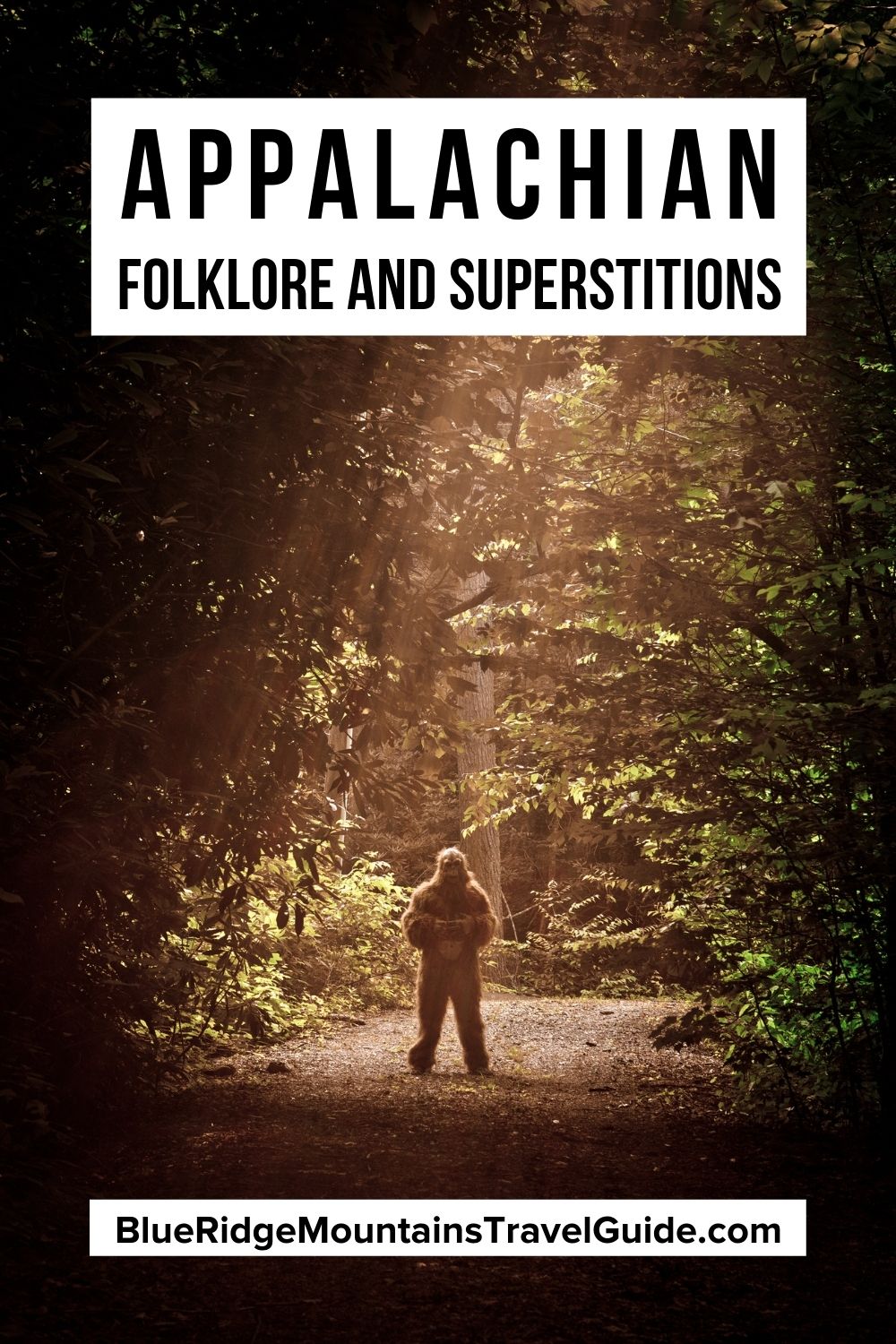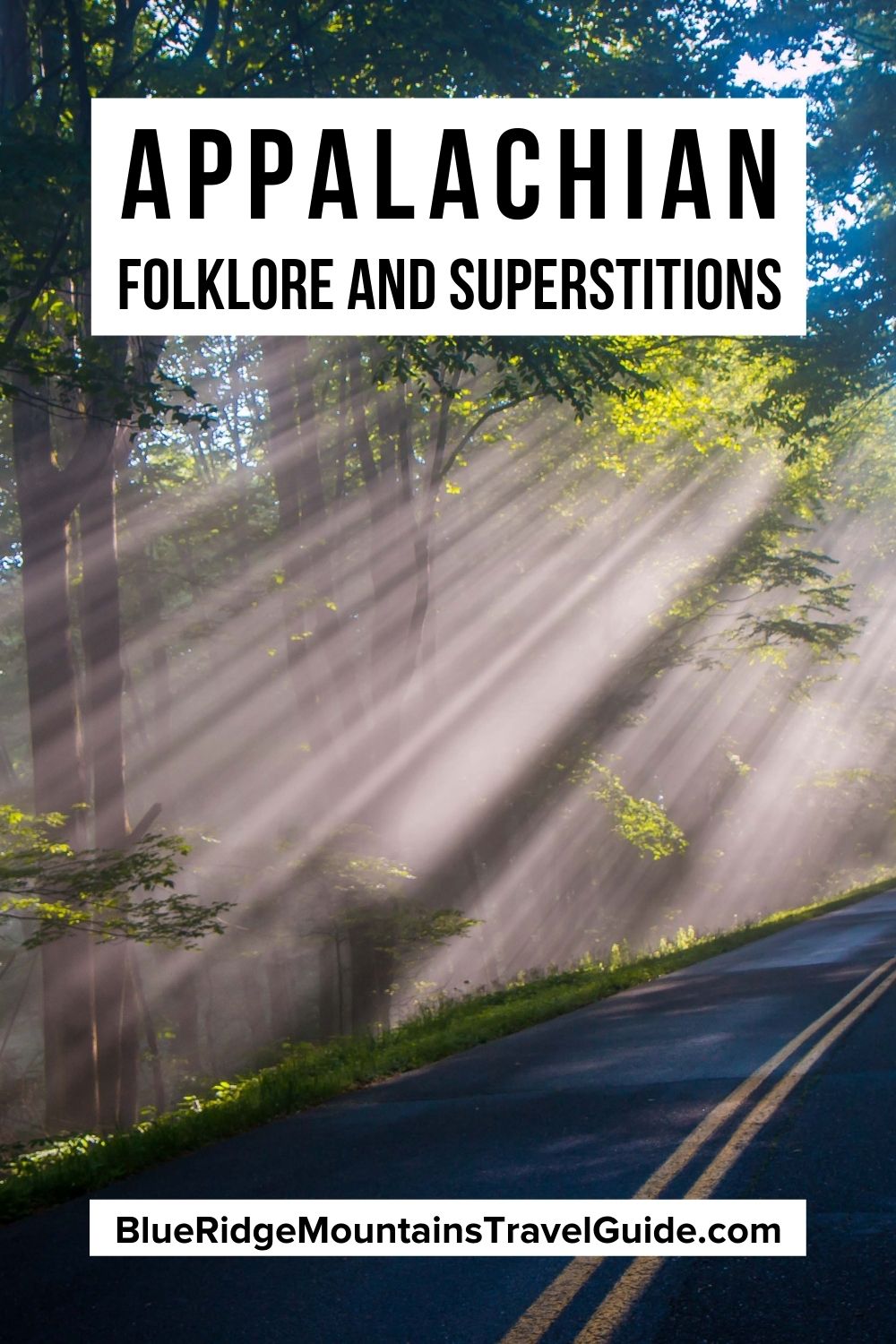Stretching from Alabama and North Georgia to Maine, the Appalachian mountain range was formed millions of years ago before being settled by Native Americans and, later, Scots-Irish, English, German, and Polish immigrants.
Since settling in the mountains in the 18th and 19th centuries, Appalachian people have developed a unique blend of cultures that has its own way of thinking.
Have you ever stopped yourself before walking under a ladder? Or held your breath when you’re passing a cemetery?
Maybe you’ve even sped up on a mountain road at night, thinking you see glowing red eyes in the woods?
Appalachian culture is known for superstitions and legends like these. While they may not be as widely practiced today, these myths and mountain folklore were passed down by countless generations.
Appalachian culture is full of its own myths, legends, and ghost stories, many of which were made famous by TV shows such as The X-Files and Mountain Monsters.
Read on to learn more about some of the most famous Appalachian folklore stories and superstitions.
READ MORE: 30 Fascinating Blue Ridge Mountains Facts
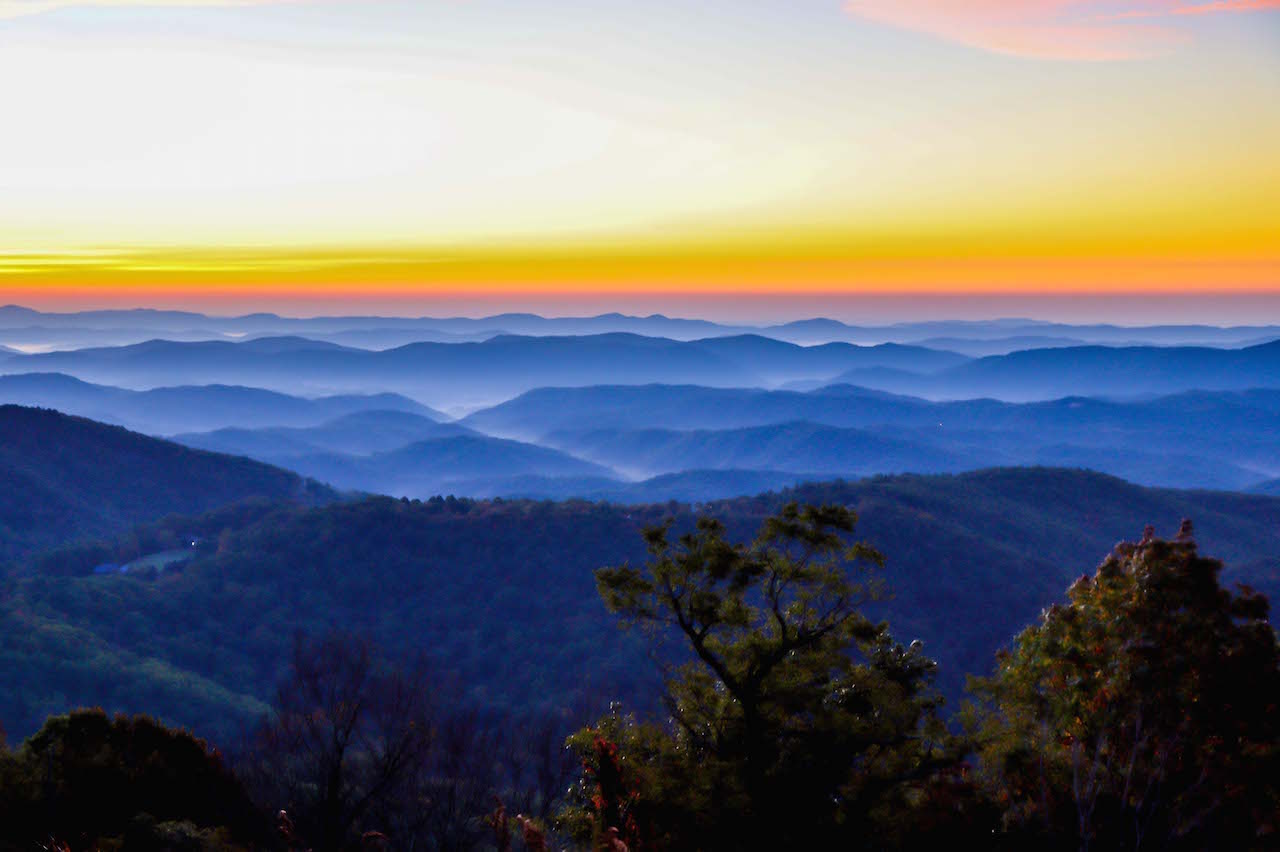
APPALACHIAN FOLKLORE GUIDE
- The Bell Witch
- Bigfoot
- The Brown Mountain Lights
- The Flatwoods Monster
- The Moon-Eyed People
- The Moth-man
- The Wampus Cat
- Appalachian Superstitions
READ MORE: The 15 Best Fall Festivals in Georgia

1. The Bell Witch
The story of the Bell Witch is one of the most popular examples of Appalachian Mountain folklore, and it began in Robertson County, Tennessee.
This legend centers around the Bell family. The Bell Witch (who is thought to be a woman named Kate Batts) was supposedly cheated in a land purchase by John Bell, the patriarch of the Bell family.
The hauntings began sometime between 1817 and 1821, when the Bell Witch would show up disguised as an animal, such as a dog or bird.
She would often focus on John’s daughter Betsy Bell, pulling the sheets off her bed, or even physically harming her with kicks, punches, and scratches.
John Bell grew so concerned by these violent escalations that he shared his story with a family friend, James Johnston.
After Johnston experienced the spirit first-hand, word quickly began to spread. The Appalachian ghost story eventually became famous enough to reach General Andrew Jackson.
According to legend, Jackson and his party set up their tents outside of the Bell home. One man, claiming he had knowledge of how to deal with witches, boasted that his silver bullets were keeping the witch at bay.
To punish him, the witch set her sights on the man, giving him a beating that had Jackson’s men begging to leave.
After John Bell’s mysterious death in 1820, the Bell Witch continued to haunt his family. She even forced Betsy to break off her engagement with Joshua Gardner before eventually disappearing for good.
Some stories claim that she promised to return to haunt John Bell’s direct descendants in 1935, but there were no reports by Nashville physician Dr. Charles Bailey Bell.
To experience these Appalachian legends for yourself, visit the Historic Bell Witch Cave, which located in Adams TN.
READ MORE: The 7 Best Caves & Caverns in North Carolina
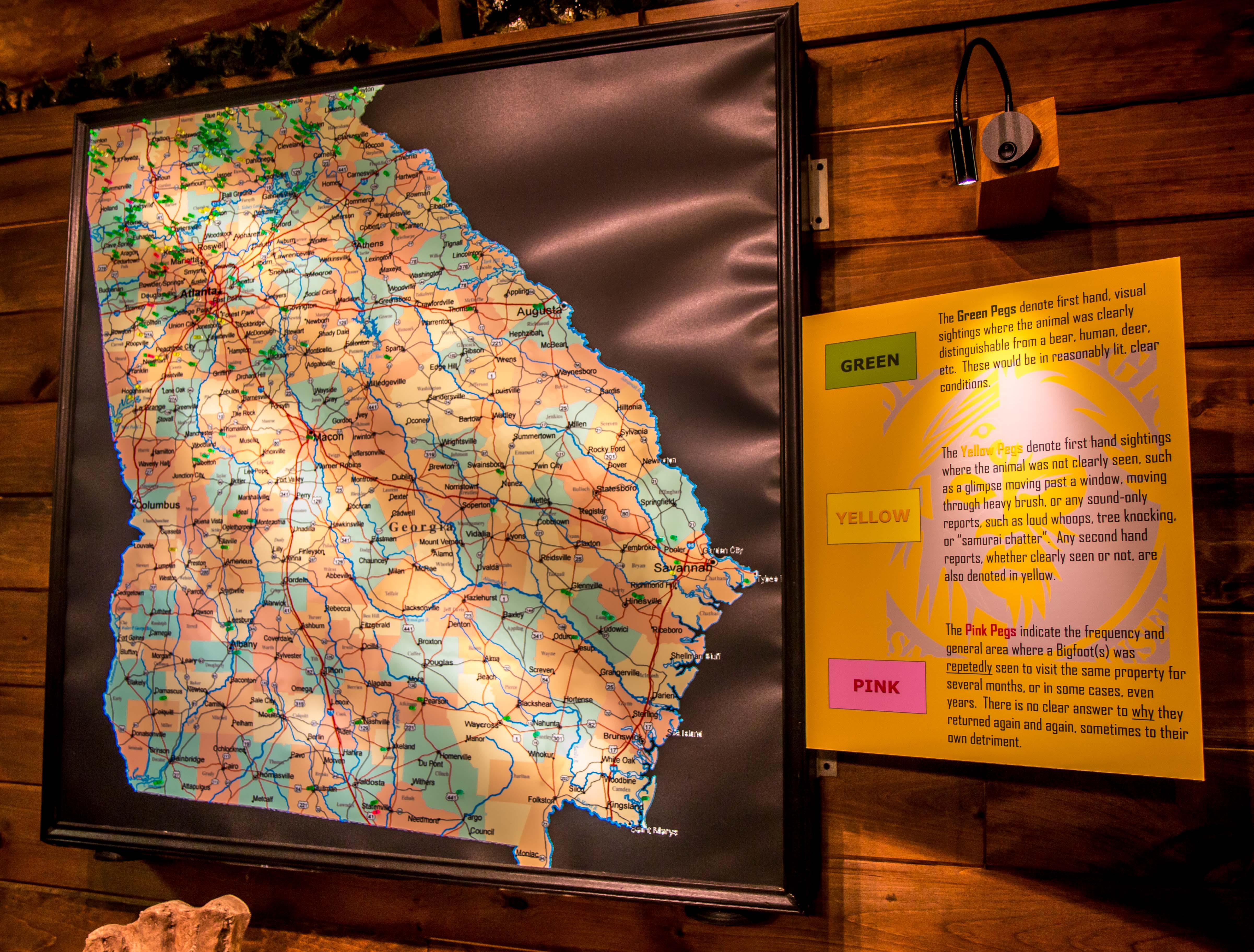
2. Bigfoot
Tales of “wild men in the woods” date back to ancient times, including indigenous cultures and medieval Europe.
But the legend of Bigfoot– a common figure in mountain folklore– began in 1958 in Humboldt County, California.
Jerry Crew, a logging company employee, discovered a set of extra-large footprints in Six Rivers National Forest. Rumors quickly spread through the company, where the name “Bigfoot” soon caught like wildfire.
Prior to the 20th century, Bigfoot was known by names like Sasquatch (a Salish word meaning “wild-men”) or Yeti (in Himalayan folklore). The Sasquatch was a hairy creature, known for bellowing, stealing livestock, and shaking trees.
Many other indigenous tribes had their own version of a large, hairy monster, but the myth of the Sasquatch was the first to be recorded by European settlers.
Since the mid-1800s, thousands of Bigfoot sightings have been reported all over the United States (including dozens of reported sightings in the North Georgia mountains).
Today you can celebrate this mythical Appalachian monster at the Bigfoot Festival in Marion NC.
At this annual festival you can expect educational panels, a Bigfoot calling contest, a costume contest, and Bigfoot-themed dishes. This year’s festival will be held on May 13 & 14, 2022.
READ MORE: Visiting Expedition Bigfoot Museum (AKA Sasquatch Museum) in Cherry Log, GA
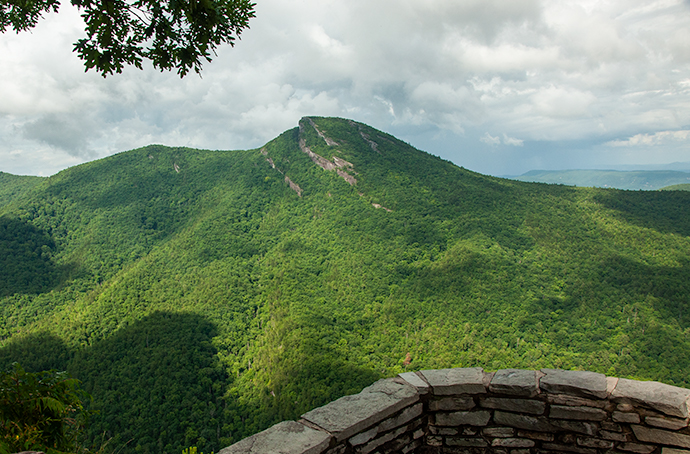
3. The Brown Mountain Lights
Found in the Blue Ridge Mountains of North Carolina, the Brown Mountain Lights are a true Appalachian mountain mystery.
Locals and tourists alike have reported glowing, orb-like lights in blue, white, orange, and red, hovering approximately 15 feet off the ground in the Brown Mountain area near Morganton NC.
Legend tells of a brutal battle between Cherokee and Catawba warriors on Brown Mountain, which left many dead on the battlefield.
In the evenings, Catawba women went searching for their sons, husbands, brothers and fathers, using torch lights to guide them. Many claim that the lights seen today are the spirits of the Catawba women, still searching for their loved ones.
The first recorded sighting of the Brown Mountain Lights happened in 1771, when German engineer John William Gerard de Brahm wrote about seeing the lights in his journal.
But his written account stated that he saw the lights at a consistent time every night, leading many people to believe he was actually seeing train lights in the distance.
Recorded accounts of Brown Mountain Light sightings happened throughout the 20th century, especially as the Linville area gained access to electricity.
While reported sightings of the colorful lights are known for their inconsistency, the lights are typically seen at night, especially after a rainfall.
The Brown Mountain Overlook, Wiseman’s View Overlook, and Lost Cove Cliffs Overlook are the most popular places to see them. All are located off NC-105 S or NC-181 near Asheville and Boone, and offer great scenic vistas at any time of day.
READ MORE: The 10 Most Haunted Places in Georgia to Visit
4. The Flatwoods Monster
Another popular myth in Appalachian folklore, the Flatwoods Monster originated in Braxton County, West Virginia.
On September 12, 1952, Edward May, Freddie May, Neil Nunley, and Tommy Hyer were playing at Flatwoods Elementary when they spotted a light shooting across the sky.
On their way to see the light, the boys stopped to tell their mother, Kathleen May, who asked National Guardsman Eugene Lemon to join them.
When they arrived at the site of the light’s crash, they saw a pulsing red light and a 10-foot-tall creature with twisted hands and a glowing green face that seemed to levitate off the ground. When the creature hissed at them, they fled.
The event made local and national news, and even prompted an official U.S. Air Force inquiry!
Today, tourists come from all over the country to visit the home of the Flatwoods Monster. To learn more about this Appalachian scary story, visit the Flatwoods Monster Museum in Sutton WV.
Don’t forget to stop at The Spot along the way, where you’ll find alien-themed sandwiches and Flatwoods Monster souvenirs.
READ MORE: The 10 Best Haunted Houses in North Carolina
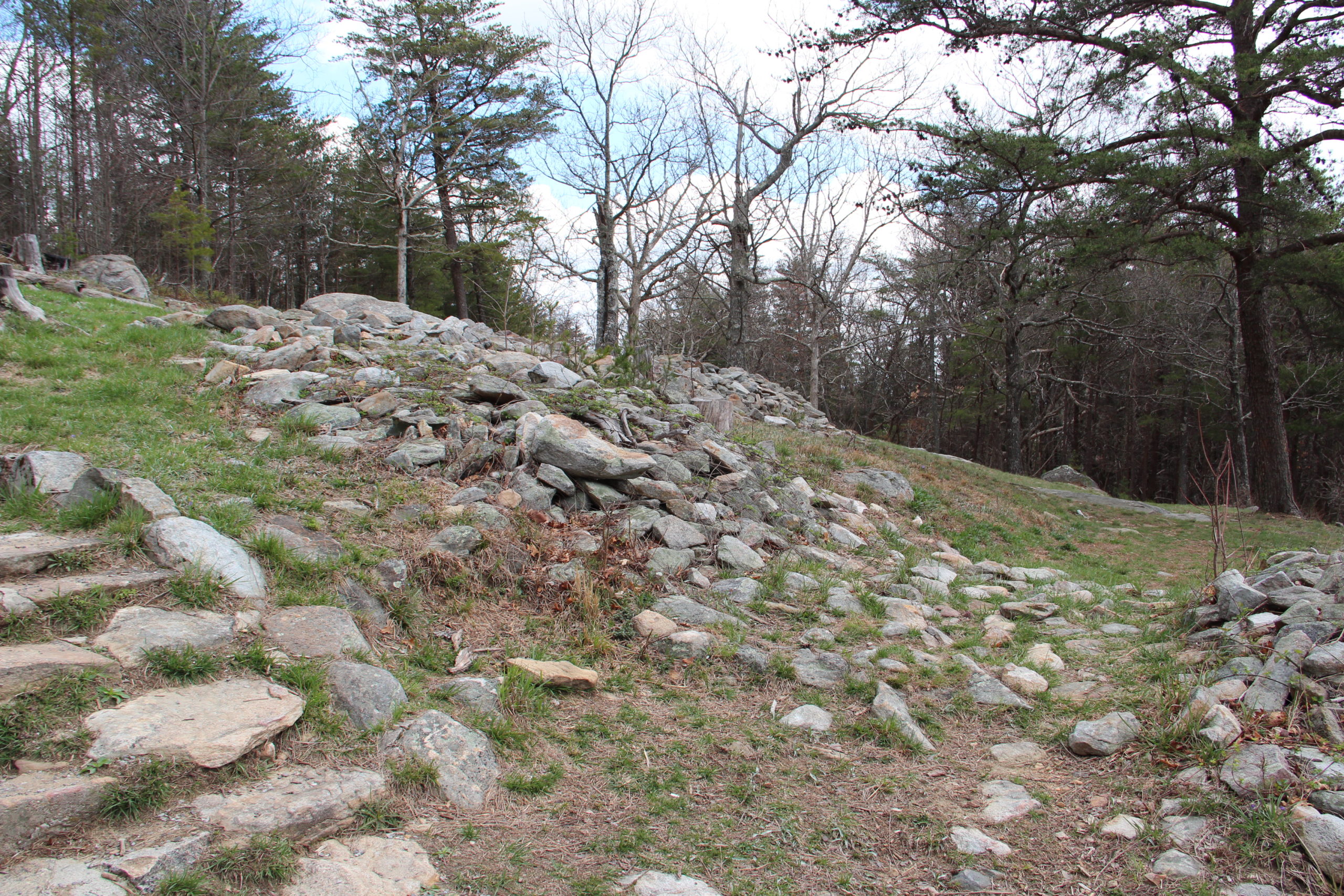
5. The Moon-Eyed People
According to both Appalachian folk tales and Cherokee legend, a group of pale-skinned humanoids called “the Moon-Eyed People” might be hiding somewhere in the Appalachian range.
Typically associated with the small town of Murphy NC, the Moon-Eyed People are short, stout, and white-skinned, with bearded faces and large blue eyes.
Their eyes were supposedly so sensitive to the sun that they remained nocturnal, which is why they’re called “moon-eyed.”
Legend says that the local Native American tribes waited for the full moon to drive the Moon-Eyed People from their underground caves. The bright light made them weak, forcing them to flee into other parts of Appalachia for good.
Unlike other Appalachian monsters, the Moon-Eyed People were considered to be a distinctively separate race of people, rather than supernatural beings.
It might seem obvious to readers, but the Moon-Eyed People were most likely just European settlers. But what makes the legend so shocking is that it dates back hundreds of years before Christopher Columbus “discovered” America.
So are the Moon-Eyed People another Appalachian Mountain scary story, or just early European settlers who never received their due credit?
Today, exhibits on the Moon-Eyed People can be found at the Cherokee County Historical Museum in Murphy. There’s a 3-foot- tall sculpture of two conjoined figures thought to represent Moon-Eyed People, which was found in the early 1840s.
Fort Mountain, a Georgia State Park near Ellijay GA, contains the ruins of an 850-foot-long stone wall that is said to have been constructed by the mysterious tribe.
READ MORE: The 15 Best North Carolina Mountain Towns to Visit
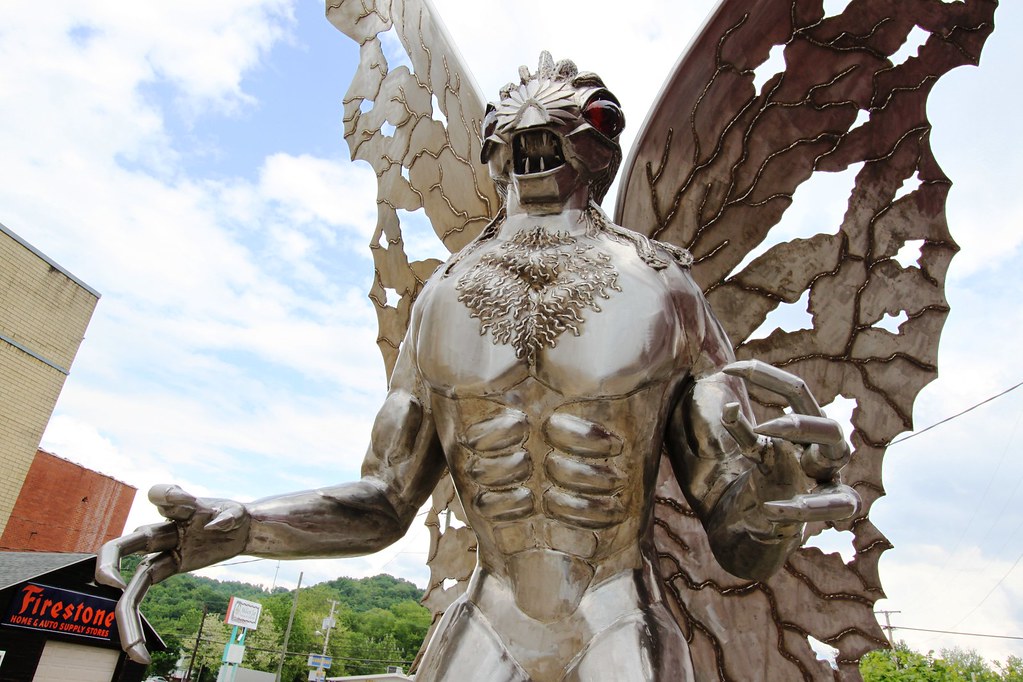
6. The Mothman
Made famous by a 1997 episode of The X-Files and the 2002 film The Mothman Prophecies, the Mothman is a fearsome creature with broad wings and red eyes who originated in Point Pleasant, West Virginia.
The story of the Mothman began on November 15, 1966. Two couples– Roger and Linda Scarberry, and Steve and Mary Mallette– reported seeing a large flying humanoid with a 10-foot wingspan and glowing red eyes following their car.
Similar reports came in over the next few days, and the sensational story was soon picked up by the local newspaper.
Mason County Sheriff George Johnson believed it to be a large bird, because the stories fit the description of a Sandhill Crane, which has a red forehead and wingspans recorded up to 7 feet, 7 inches.
On December 15, 1967, the Mothman was credited for the collapse of Silver Bridge, which killed 46 people.
For more information on this infamous Appalachian monster, visit the Mothman Museum in Point Pleasant, where you can take a selfie with the massive Mothman statue displayed prominently outside.
You can also celebrate the Appalachian myth at the annual Mothman Festival, which typically happens on the third weekend in September.
This year’s festival falls on September 17 and 18, 2022. The festival features guest speakers, live bands, vendors, cosplay, and even a 5K run.
READ MORE: The 20 Best Fall Festivals in Georgia
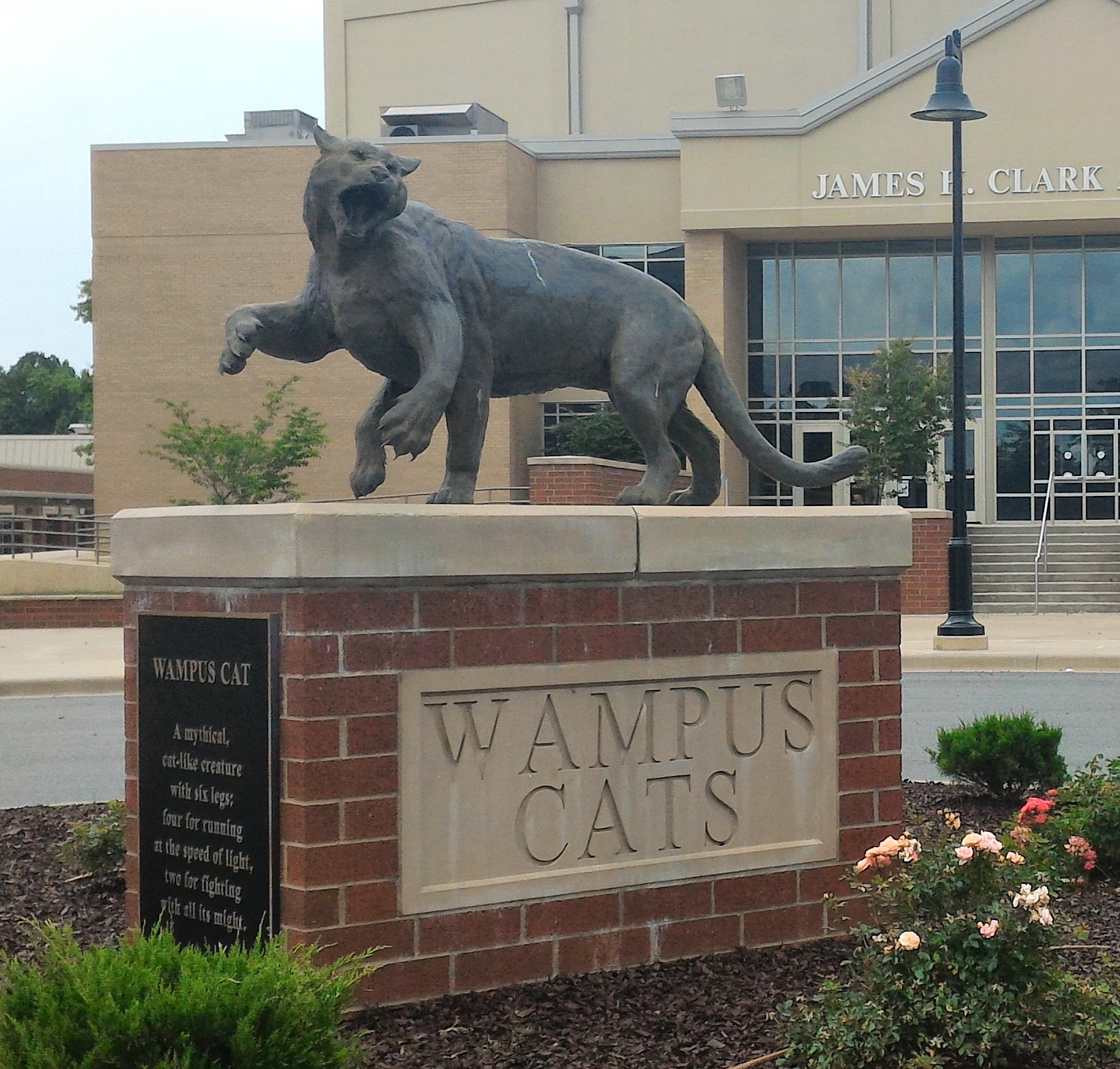
7. The Wampus Cat
The Wampus Cat (a.k.a. Cherokee Death Cat) is a large cat similar to a mountain lion or cougar, with tan-yellow fur, six legs, and large yellow eyes.
The legend holds that a Cherokee female was cursed by tribal elders for witnessing a sacred pre-hunt ceremony. She hid under the pelt of a large cat and got turned into the half-woman, half-beast we hear about in this famous Appalachian myth.
Forever left to wander alone through the mountains, the Wampus Cat acts out in anger at being cut off from her former life.She’s known for standing on her hind legs and using her supernatural powers to drive her victims to insanity.
Despite being a story about Cherokee people, the Wampus Cat folktale did not originate with the Cherokee people. Instead, the name came from the Goldsboro News-Argus newspaper in North Carolina.
In 1964, a hairy ape-man (who sounds suspiciously like Bigfoot) was reported to be roaming around US 70. The newspaper named the mysterious creature the Wampus Cat, and the name stuck.
The name likely derives from the word “catawampus,” a mountain folklore saying that describes a boogeyman, or something that has gone badly.
Strangeways Brewing, which has locations in Richmond and Fredericksburg, Virginia brews a beer named after the Wampus Cat, the Wampus Cat Triple IPA.
The name was also used for a mythical creature in J.K. Rowling’s Pottermore story, “The History of Magic in North America.
READ MORE: The 15 Best Things to Do in SWVA (Southwest Virginia)
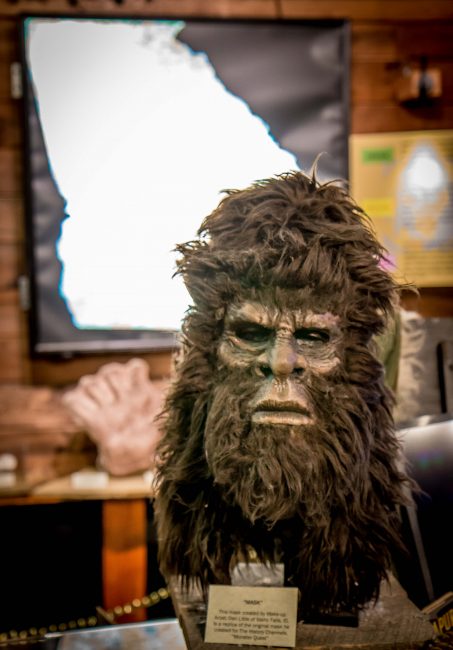
APPALACHIAN SUPERSTITIONS
When I asked my Tennessee-based family about the most common Appalachian superstitions, I was shocked by how many we still practice today.
Many of these mountain folklore sayings were passed down by my great-grandparents, but still live on a century later.
- Never close a knife you didn’t open, or you’ll have bad luck for 7 years.
- Keep a penny in your washer.
- Always go out the same door you came in.
- Eat black eyed peas or collard greens with hog jaw on New Year’s Day.
- Don’t wash clothes on New Year’s Day or you will wash a family member out.
- Don’t sleep on New Year’s.
- Don’t do any canning or gardening on your period.
- Plant your crops under the full moon.
- Don’t walk under a ladder. If you find yourself under one, don’t turn around– back up.
- Don’t let anyone sweep under your feet.
- Never give someone a set of knives as a gift. If you give them to newlyweds, it will cut their love!
- If a black cat crosses your path, turn and go a different way.
- Never repay salt that you have borrowed.
- If a bad storm is coming, put a 2-edged axe into a stump facing the storm to ensure the storm goes around you.
- If you spill salt, throw a pinch over your left shoulder so you won’t have bad luck.
- When you drop your fork, it means a woman is coming to visit. If you drop a knife, a man is coming to visit.
- Don’t cut your baby’s hair before their first birthday.
- Your baby has to fall off the bed before their first birthday.
- Run a chicken over your baby to keep if from getting chicken pox.
- Don’t let a pregnant woman see a dead person or the baby will have a birth mark.
- If cows are laying down, or leaves are upside down, it’s going to rain.
- Hang a horseshoe upside down to keep good luck from running out.
- Wear a buckeye in your bra to ward off rheumatism.
- Hold your breath when you pass a cemetery, or you’ll be the next to die.
- If you see a white horse, you’ll have good luck.
- Hold your feet up when you’re crossing a railroad track, or you’ll lose your boyfriend.
- If you’re walking with someone you have to go on the same side of a post or obstacle, or it will break your friendship.
- Don’t wash clothes on Sunday.
- If your nose is itching, it means company is coming.
- Open the window when someone dies and cover the mirrors so that their soul can leave.
- Hang a mirror by the door to protect against evil.
- Never leave a rocking chair rocking, or you will invite spirits. –by Amy Lewis; lead image via Canva


